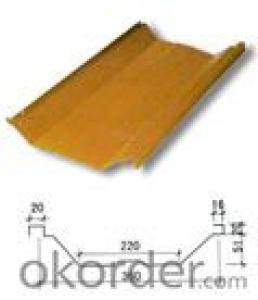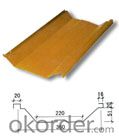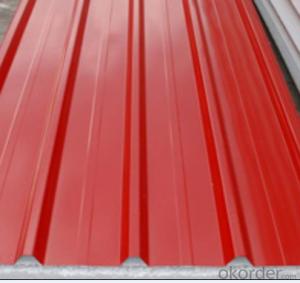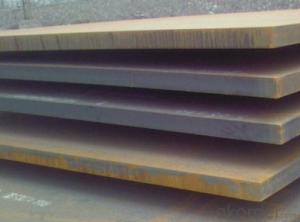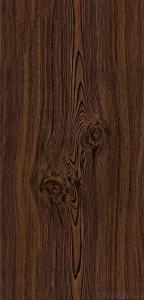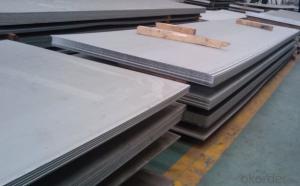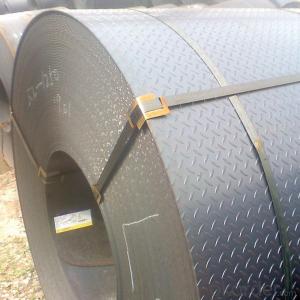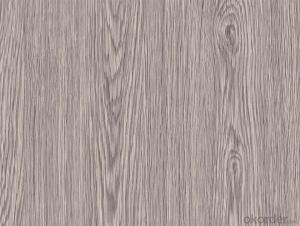colored steel plate3
- Loading Port:
- China Main Port
- Payment Terms:
- TT OR LC
- Min Order Qty:
- -
- Supply Capability:
- -
OKorder Service Pledge
OKorder Financial Service
You Might Also Like
Quick Details
| Standard: | Grade: | Place of Origin: | |||
| Brand Name: | Model Number: | Type: | |||
| Technique: | Surface Treatment: | Application: | |||
| Material: | Certificate: | Design: | |||
| galvanized steel coil: | galvanized steel sheet: |
Packaging & Delivery
| Packaging Detail: | Naked package or loose package for steel structure |
| Delivery Detail: | According to customers' requirements & our actual producing pla n |
Specifications
price mild steel sheet:
1. Strong and reliable Galvanized Steel Sheet
2. Antiseismic
3.Meeting different requests
Commodity | price mild steel sheet |
Thickness: | 4mm-120mm |
Width | 1500mm-3600mm |
Length | Random length as your request |
Technique | Hot Rolled and Cold Rolled |
Material | A283Gr.D/A573Gr.65,A516Gr65,A516Gr70,A284Gr.D SS400,SS300,CCSB A36,A32,LRA32,LRB,Q235 SAE1010,SAE1020,SAE1045 |
Surface Treatment | Galvanized |
Application | Construction filed, ship building, chemical industry, food processing,etc. |
MOQ | 5 tons |
Supply Ability | 3000 tons |
Delivery | Within 7-15 days after confirmation |
Packaging | In standard export packing or as your request. |
Payment | L\C or T/T |
- Q: Are steel sheets resistant to chemical spills?
- Yes, steel sheets are generally resistant to chemical spills. Steel is known for its durability and ability to withstand various environmental factors, including chemical exposure. However, the extent of resistance may vary depending on the specific type of steel and the nature of the chemical involved. It is always advisable to consult with experts or refer to relevant material compatibility charts to ensure the appropriate selection of steel for specific chemical spill scenarios.
- Q: Can steel sheets be used for manufacturing containers or tanks?
- Yes, steel sheets can be used for manufacturing containers or tanks. Steel is a durable and strong material that is commonly used in the construction of containers and tanks due to its ability to withstand pressure, corrosion, and extreme temperatures. Additionally, steel sheets can be easily shaped and welded to meet specific design requirements, making them suitable for manufacturing various types of containers or tanks.
- Q: What is the typical hardness range for steel sheets?
- The hardness range of steel sheets varies depending on the specific grade and type of steel employed. Generally, steel sheets exhibit a hardness range of 150 to 250 on the Vickers hardness scale (HV), striking a favorable balance between strength and formability. This characteristic renders steel sheets appropriate for a diverse array of applications. It is worth emphasizing that the hardness can be further modified through different heat treatment methods to attain desired properties.
- Q: Can steel sheets be used for electrical motors?
- Yes, steel sheets can be used for electrical motors. Steel is commonly used in the construction of electrical motors due to its magnetic properties. The sheets of steel are typically used to create the core of the motor, which is responsible for generating the magnetic field necessary for the motor's operation. Steel has a high magnetic permeability, which means it can easily conduct and channel magnetic flux, making it an ideal material for this purpose. Additionally, steel is durable and can withstand the high temperatures and mechanical stresses that electrical motors may experience during operation. Therefore, steel sheets are often chosen as a reliable and cost-effective option for constructing electrical motors.
- Q: Are steel sheets suitable for aerospace applications?
- Yes, steel sheets are suitable for aerospace applications.
- Q: How can the steel plate of flat welding 10mm make its deformation smaller?
- The most simple way is to set up a few blocks in the weld transverse positioning plate, welding seam after cooling in the two side gently hammering stress relief force dismantled.
- Q: Can steel sheets be used for architectural designs?
- Yes, steel sheets can be used for architectural designs. Steel sheets are versatile and have various aesthetic options, making them suitable for architectural applications such as wall cladding, roofing, and decorative elements. Additionally, steel sheets offer durability, strength, and a wide range of finishes, making them a popular choice for modern and contemporary architectural designs.
- Q: Are steel sheets suitable for manufacturing water pipes?
- Yes, steel sheets are suitable for manufacturing water pipes. Steel is a durable and strong material that can withstand high pressure and corrosion, making it an ideal choice for water pipe manufacturing.
- Q: Can steel sheets be used in the construction industry?
- Yes, steel sheets can be used in the construction industry. They are commonly used for various applications such as roofing, siding, flooring, and structural components due to their strength, durability, and resistance to fire and corrosion.
- Q: Can the steel sheets be easily cleaned?
- Certainly, steel sheets can be effortlessly cleaned. Renowned for their durability and low-maintenance nature, steel sheets can be swiftly wiped down with a damp cloth or sponge accompanied by mild soap or detergent. In the case of stubborn stains or grime, a non-abrasive cleaner is recommended. Moreover, steel sheets exhibit exceptional resistance to rust and corrosion, rendering them well-suited for diverse settings and ensuring hassle-free maintenance in the long term.
Send your message to us
colored steel plate3
- Loading Port:
- China Main Port
- Payment Terms:
- TT OR LC
- Min Order Qty:
- -
- Supply Capability:
- -
OKorder Service Pledge
OKorder Financial Service
Similar products
Hot products
Hot Searches
Related keywords
